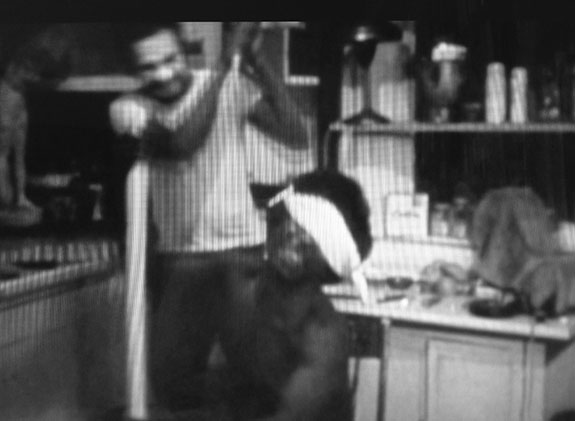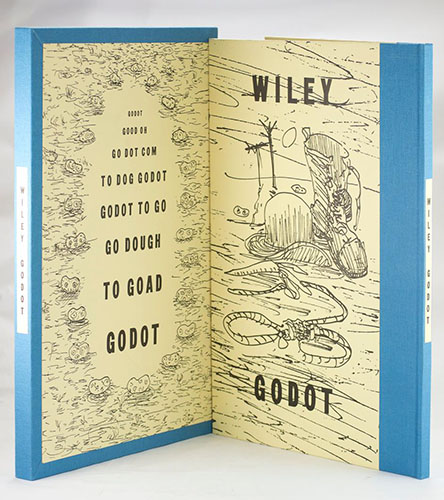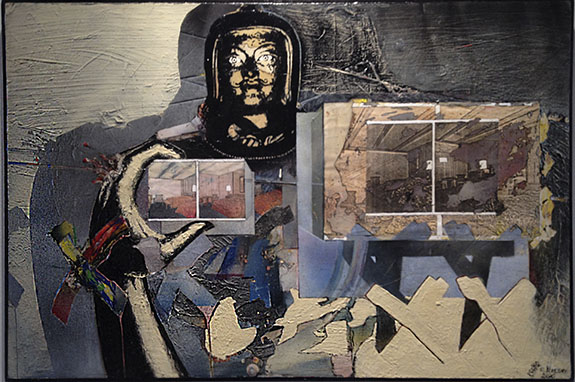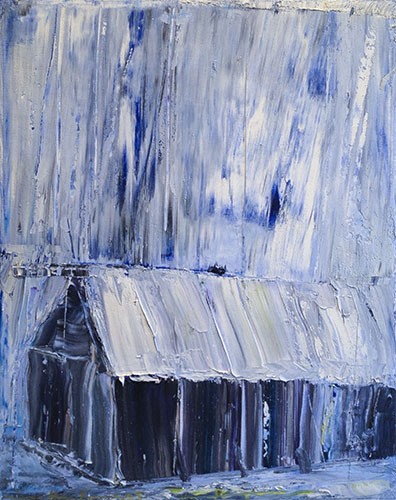 |
This exhibition is about three friends. Friends who met “at a creative time in art and life” when “everything seemed possible…and was.” The words are William T. Wiley’s, and they describe a golden era in Bay Area art, between the late 1950s and the mid-1970s, when collaboration flourished and when boundaries between poetry, film, music, performance and the visual arts were memorably dissolved. The era may have receded into history but its artifacts and influence endure. This exhibition provides plenty of proof, from both the past and the present.
 |
Henderson substituting “It’s cold down here” for “You got me way down here,” Hooker’s line from the delta blues classic, Baby Please Don’t Go. Henderson’s donning of a white face, it should be noted, may be more than just convenient casting. By accident or design, it points to the fact that slavery wasn’t perpetrated solely by whites, but also by Africans who assisted white traders from Europe and the Americas. The film, which was screened at last year’s Blues for Smoke festival at MOCA, stands with the best of Carrie Mae Weems and Kara Walker, both of who have current shows, Weems at the Cantor Arts Center, Walker at the Crocker Art Museum.
 |
Wiley, for his part, fills one wall of the gallery with 50 hand-colored prints from Godot: an Imaginary Staging, a book of drawings published in 2006 to commemorate Samuel Beckett’s 100th birthday. In it, a bum plays an everyman struggling for meaning in a decimated landscape brought to life Wiley’s familiar witticisms, wordplay and visual puns. The prints stand as a welcome preview for a solo show of Wiley’s new work, slated for exhibition next spring at Hosfelt Gallery in SF.
The biggest rewards (and surprises) in this show come from Henderson and Nelson — Nelson especially since his painting, sculpture and photography are largely unknown outside the cognoscenti. This show sheds valuable light. One wall of photo collages from the 1960s brings to mind David Hockney’s cubist experiments of the 1980s. A row of undated pedestal-mounted sculptures, made of found objects, shows Nelson to be a master of Funk, employing an everything-but-the-kitchen sink attitude toward found objects. But it’s his paintings that are revelatory. Sitting Bull is a collection of paint globs and detritus embedded in resin. A photo of the subject rests at the bottom, staring out from what feels like a sea of blood. Horizontal white marks near the surface echo those of the red brick wall on which the piece hangs, accentuating the picture’s transparency and giving the work a physical presence that extends beyond the frame. On an opposite wall, a group of untitled works dating from the mid-1970s to 2003 show the artist in other moods: pornographic, scientific, cosmic-leaning. No two are even
 |
vaguely alike. A rose-tinted coupling of disembodied sex organs is a crusty exercise in abstract figuration. In another picture, a space alien presides over a quartet of suburban bedrooms, while a third, also untitled, shows a fiery red ring enclosing smoky white wisps atop a neutral ground, suggesting a macrocosmic view of something, but what? Even if Nelson never made a single film, paintings like these, had they been circulated more widely, might have pushed his art into a broader context. As it was, his films did quite enough to cement his legend.
 |
blues band.) While his painterly rhythms feel more akin to the polyrhythms of jazz than to blues, his colors are definitely rooted in earthly experience. Four powerful, vividly colored canvases of recent vintage attest to that; but the painting that held my attention longest was one of the smallest: Driving Rain, from 2009. It shows a cabin in a downpour and the coldness of blue in it made me shiver.
Such feelings help place into perspective just how different the East and West Coasts were at the time Henderson and his friends came to the fore. In the East, French theorists, building off the reductive thinking of Clement Greenberg, gained traction with the notion that sensual pleasures like Henderson’s ought to be replaced by flatter, purer, idea-driven forms or just ideas without any objects. Henderson, Wiley and Nelson and took the opposite approach. Favoring an art that leans toward expressivity and material engagement, they let the conceptualists go their own way.